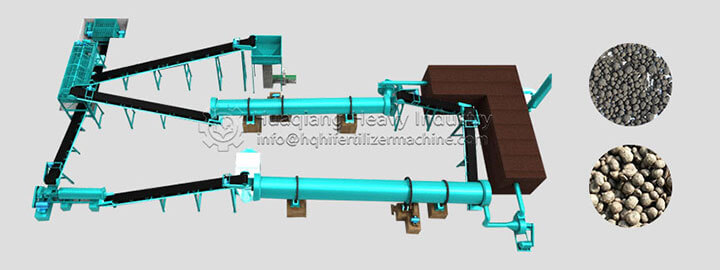As a core fertilizer in ecological agriculture, the production process of bio-organic fertilizer powder must balance nutrient retention and biological activity. Relying on standardized bio-organic fertilizer production lines, the entire process adheres to the principles of "harmlessness, resource utilization, and high efficiency," and mainly consists of four core stages.

Raw material pretreatment is the foundation of production. Using livestock and poultry manure, straw, mushroom residue, and other organic waste as the main raw materials, and employing professional bio-organic fertilizer equipment, impurities such as stones and plastics are first removed through a screening device, followed by crushing to control the particle size to below 10 mm, increasing the contact area with microorganisms. Subsequently, the raw materials are blended at a carbon-to-nitrogen ratio of 25:1-30:1, while adjusting the moisture content to 55%-60%, creating a suitable environment for microbial fermentation. Some manufacturers add a small amount of composting agent at this stage to accelerate the decomposition of organic matter.
Fermentation and composting is the key stage. The prepared raw materials are fed into a fermentation tank, inoculated with functional microbial agents such as Bacillus subtilis and lactic acid bacteria, and regularly turned using a compost turner to maintain ventilation and aeration, with the temperature controlled between 55℃ and 65℃. High-temperature fermentation not only kills pathogens, insect eggs, and weed seeds, but also promotes the conversion of organic matter into humus. The entire fermentation process lasts 15-20 days, during which temperature, humidity, and pH levels must be monitored in real time to ensure complete decomposition and prevent secondary fermentation in the finished product.
Deep processing determines product quality. After decomposition, the material is cooled to room temperature and then enters the pulverizing process, where it is processed to 80-100 mesh to form a fine powder. Subsequently, a drum screener machine is used to remove incompletely decomposed coarse particles, ensuring product uniformity. To improve fertilizer efficiency, trace elements or functional microbial agents can be added at this stage, and the mixture is thoroughly stirred to ensure even distribution of components.
Finished product testing and packaging are the final line of defense. The pulverized and mixed product undergoes multiple tests, including organic matter content, viable bacteria count, moisture content, and pH value, and must comply with the national standard for "Bio-organic Fertilizer" (NY 884-2012). After passing the tests, it is quantitatively packaged using an automatic packaging machine, with product information and shelf life labeled. During storage, it must be protected from moisture and ensure ventilation to prevent microbial inactivation and ensure product stability during transportation and use.
This standardized bio organic fertilizer production process not only achieves the resource utilization of organic waste but also produces environmentally friendly and efficient bio-organic fertilizer, providing strong support for sustainable agricultural development.